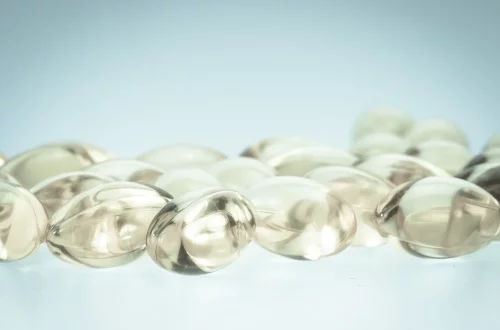
Do Shrimp Eat Algae? Exploring Their Diet and Ecosystem Role
Shrimp are fascinating creatures that inhabit various aquatic environments, from freshwater streams to the vast oceans. These small crustaceans play an essential role in the ecosystem, contributing to nutrient cycling and serving as a vital food source for many species. Their diets are diverse and can vary significantly based on their habitat, size, and species. While shrimp are often associated with a carnivorous diet, their eating habits are more complex, including the consumption of plant materials and microorganisms. This raises an intriguing question: do shrimp eat algae?
Understanding the dietary preferences of shrimp not only reveals their ecological significance but also highlights their role in maintaining the balance within aquatic ecosystems. Algae are a primary producer in many water bodies, contributing to oxygen production and serving as a critical food source for various marine organisms. The relationship between shrimp and algae can be seen as part of a broader food web, where each organism has a unique role in promoting ecological health. Through exploring the dietary habits of shrimp, we can gain insights into their behaviors and the intricate connections within aquatic environments.
As we delve deeper into the topic, we will investigate the types of foods shrimp consume, their feeding mechanisms, and their interactions with algae and other aquatic organisms. This exploration will not only illuminate the question of whether shrimp eat algae but also enhance our understanding of the dynamic nature of underwater ecosystems.
The Diverse Diet of Shrimp
Shrimp are omnivorous, meaning they do not limit themselves to a single type of food source. Their diet typically consists of a combination of plant and animal matter, which allows them to thrive in various environments. Depending on the species and habitat, shrimp can consume a wide range of food items, including detritus, plankton, and small fish.
In the wild, many shrimp species forage on the ocean floor, scavenging organic material and decomposing plant matter. They are particularly fond of detritus, a mixture of decomposing plant and animal particles. This feeding habit is crucial as it helps break down organic materials, returning nutrients to the ecosystem. Some shrimp also graze on biofilm, a thin layer of algae and microorganisms that develop on surfaces in aquatic environments, effectively consuming the algae in the process.
Certain species of shrimp have developed specialized feeding mechanisms to optimize their diet. For instance, filter-feeding shrimp possess unique appendages that allow them to filter small particles from the water column. This adaptation enables them to capture algae, plankton, and other minute organisms efficiently.
In addition to detritus and algae, shrimp also feed on small crustaceans, mollusks, and even fish eggs, showcasing their opportunistic feeding behavior. The diverse dietary habits of shrimp not only benefit their survival but also play an essential role in the health of their ecosystems, as they help maintain the balance of different populations.
The Role of Algae in Shrimp Diets
Algae serve as a significant food source for many aquatic animals, and shrimp are no exception. While not all shrimp species actively consume algae, many do incorporate it into their diets, particularly during their juvenile stages. Algae provide essential nutrients, including carbohydrates, proteins, and vitamins, which contribute to the growth and development of young shrimp.
Certain species, such as the grass shrimp (Palaemonetes spp.), are known to feed primarily on algae and other plant materials. This feeding behavior is particularly evident in environments where algae blooms are prevalent. In these conditions, shrimp can thrive by consuming the abundant algal biomass, which not only supports their growth but also provides a habitat for other microorganisms they may consume.
Moreover, algae play a crucial role in maintaining water quality in shrimp habitats. By consuming algae, shrimp help control algal populations, preventing overgrowth that can lead to oxygen depletion and detrimental effects on the ecosystem. This natural regulation is vital for sustaining the health of aquatic environments, demonstrating the interconnectedness of species within these systems.
In addition to their direct consumption of algae, shrimp also contribute to nutrient cycling within their habitats. As they feed on algae and other organic materials, they excrete waste products that enrich the surrounding water with nutrients, promoting the growth of more algae and supporting the overall productivity of the ecosystem. This cyclical relationship highlights the importance of shrimp in maintaining ecological balance.
The feeding mechanisms of shrimp are as diverse as their diets. Their anatomy is specially adapted for foraging and capturing food, allowing them to exploit various food sources effectively. Most shrimp have a pair of pincers, known as chelae, which they use to grasp and manipulate food. These pincers are crucial for scavenging and hunting, enabling shrimp to capture prey or gather plant materials.
Different shrimp species exhibit unique feeding behaviors based on their ecological niche. For example, some species are opportunistic feeders that actively search for food on the ocean floor, while others may rely on filter-feeding strategies to extract nutrients from the water column. This adaptability allows shrimp to thrive in various environments, from coral reefs to muddy estuaries.
In addition to their physical adaptations, shrimp also display fascinating social behaviors when it comes to feeding. Many shrimp species engage in cooperative feeding, where individuals work together to forage for food. This behavior not only enhances their foraging efficiency but also fosters social bonds among individuals, which can be beneficial for survival in the wild.
Furthermore, shrimp are known to exhibit selective feeding behaviors, often preferring specific food types based on their nutritional content and availability. This selectivity can vary according to the shrimp’s life stage, habitat, and environmental conditions. For instance, juvenile shrimp may prioritize algae-rich diets to support their growth, while adult shrimp may shift towards more protein-rich foods.
Shrimp play a pivotal role in aquatic ecosystems, influencing both the biotic and abiotic components of their environment. By consuming algae and other organic materials, they contribute to nutrient cycling and help maintain the health of their habitats. Their feeding behaviors directly impact the abundance and distribution of algal populations, which in turn affects other organisms that rely on algae as a food source.
In addition to their role as grazers, shrimp are also a crucial food source for various predators, including fish, birds, and mammals. This positioning in the food web highlights their importance in supporting biodiversity within aquatic ecosystems. Healthy shrimp populations contribute to the overall stability and resilience of these environments, making them indispensable players in the ecological balance.
Moreover, shrimp are often used as bioindicators in environmental monitoring. Their sensitivity to changes in water quality and habitat conditions makes them valuable for assessing the health of aquatic ecosystems. By studying shrimp populations and their interactions with algae and other organisms, researchers can gain insights into the overall ecological health of water bodies.
In conclusion, the relationship between shrimp and algae is complex and multifaceted. While not all shrimp species exclusively consume algae, many incorporate it into their diets, highlighting the significance of algae as a food source. Additionally, shrimp contribute to the health of aquatic ecosystems through their foraging behaviors and interactions with various organisms. Understanding these dynamics is essential for conserving marine environments and ensuring the sustainability of shrimp populations.
*This article is not intended as medical advice. For any health-related concerns, please consult a qualified healthcare professional.*




